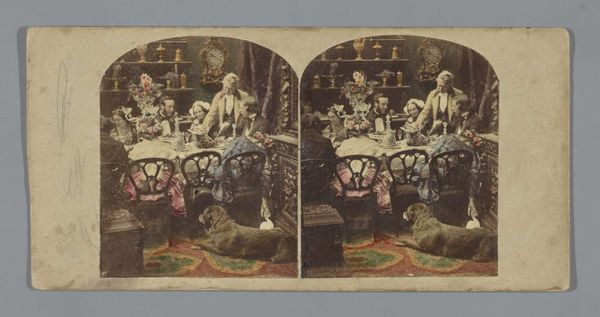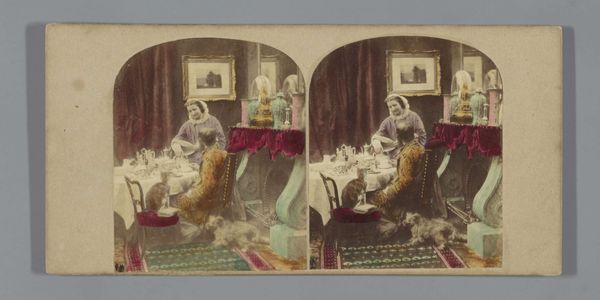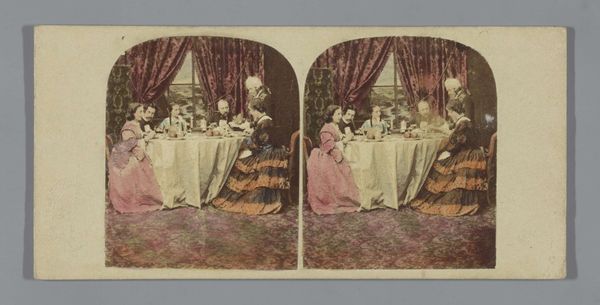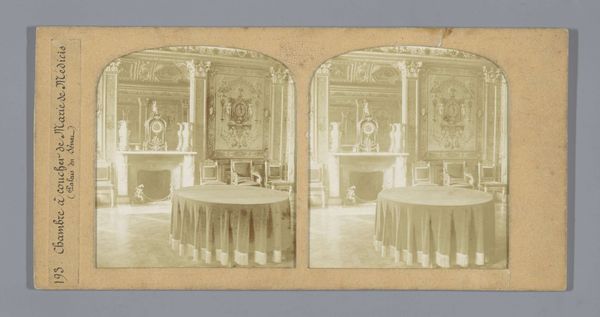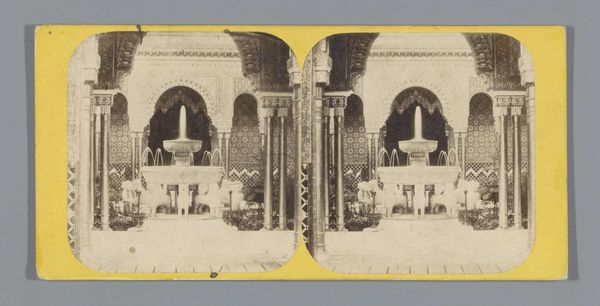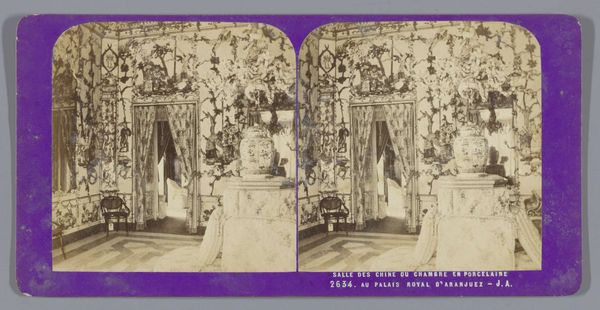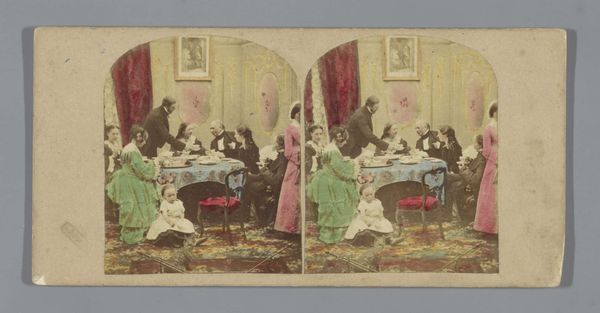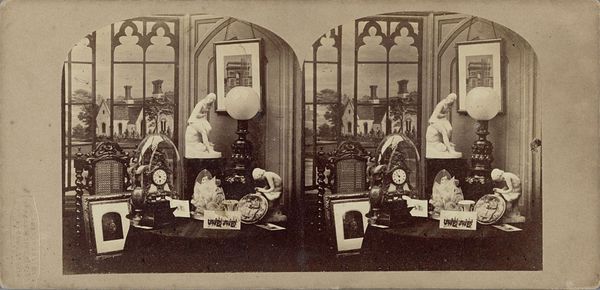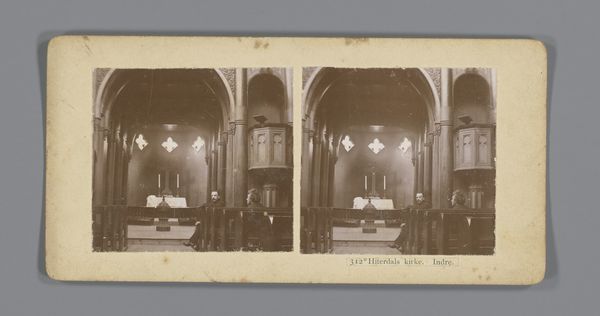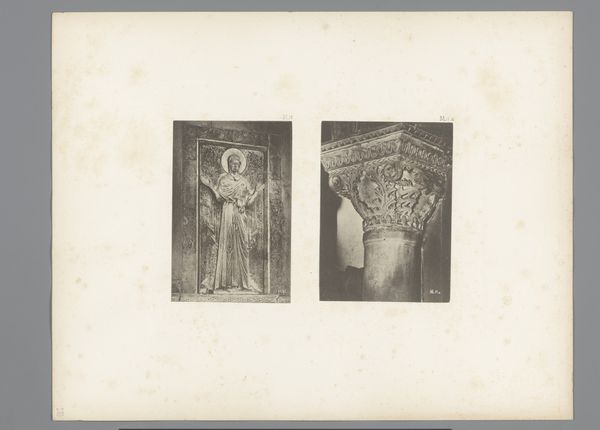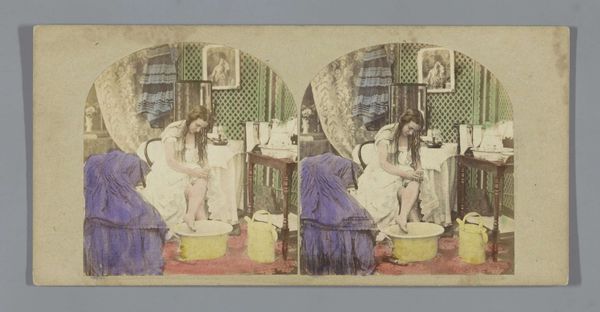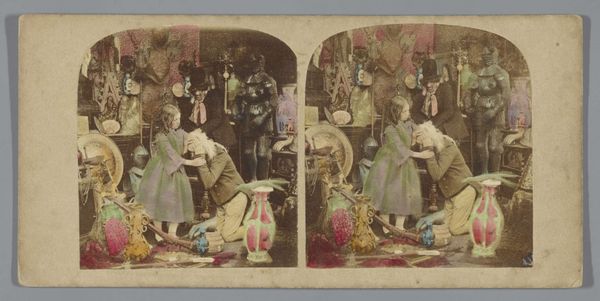
mixed-media, coloured-pencil, print, photography
#
portrait
#
mixed-media
#
coloured-pencil
#
water colours
# print
#
photography
#
coloured pencil
#
genre-painting
Dimensions: height 84 mm, width 172 mm
Copyright: Rijks Museum: Open Domain
Curator: This delightfully wry scene before us, created by Hablot Knight Browne in 1858, is titled "Een priester verstopt eten op vastendag, een misdienaar betrapt hem". It’s a photographic print enhanced with coloured pencil, making it quite intriguing from a technical standpoint. Editor: Well, my first thought is how effectively the artist has captured a moment of transgression! The composition really draws your eye to the priest’s furtive action. The palette, though muted, enhances the underlying sense of quiet mischief. Curator: Browne, known for his illustrations for Dickens, often explored social issues with humor. This piece, with its mixed-media approach, reflects a mid-19th century interest in realism combined with artistic license. I see it as an early commentary on the material hypocrisy that sometimes clashed with religious doctrine. The food being hidden suggests the real-world comforts versus the proclaimed self-denial during Lent. Editor: I agree there's social commentary here, but let's also acknowledge the compositional balance. The artist repeats elements of the scene as we have a stereo image—a clever compositional device that emphasizes the central figures and the act of concealing food, creating symmetry and reinforcing the sense of order disrupted by the priest's actions. Notice, too, how the dark attire of the figures sets off the pure white linen on the table? Curator: Absolutely, and consider the social context: this image likely circulated as part of a burgeoning visual culture enabled by advancements in print and photographic reproduction, offering critique to an expanding audience. Was the process of replicating this scene influencing how it was then received? Editor: It's a compelling piece on multiple levels. The details, when taken in together, help you observe it from different perspectives, it seems. Curator: Indeed. By understanding its production, reproduction, and distribution, we can unlock deeper layers of meaning and engagement with Browne's societal observation. Editor: Precisely. It is, on final reflection, the piece’s visual grammar – its structure and visual tensions – that first intrigues, later giving way to those material and contextual readings that further our own intellectual understanding.
Comments
No comments
Be the first to comment and join the conversation on the ultimate creative platform.
